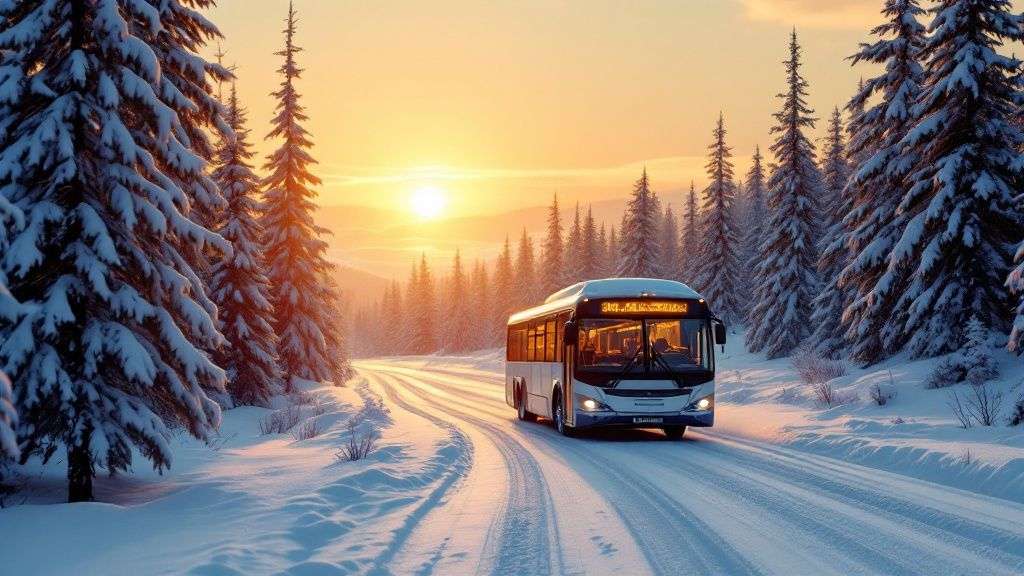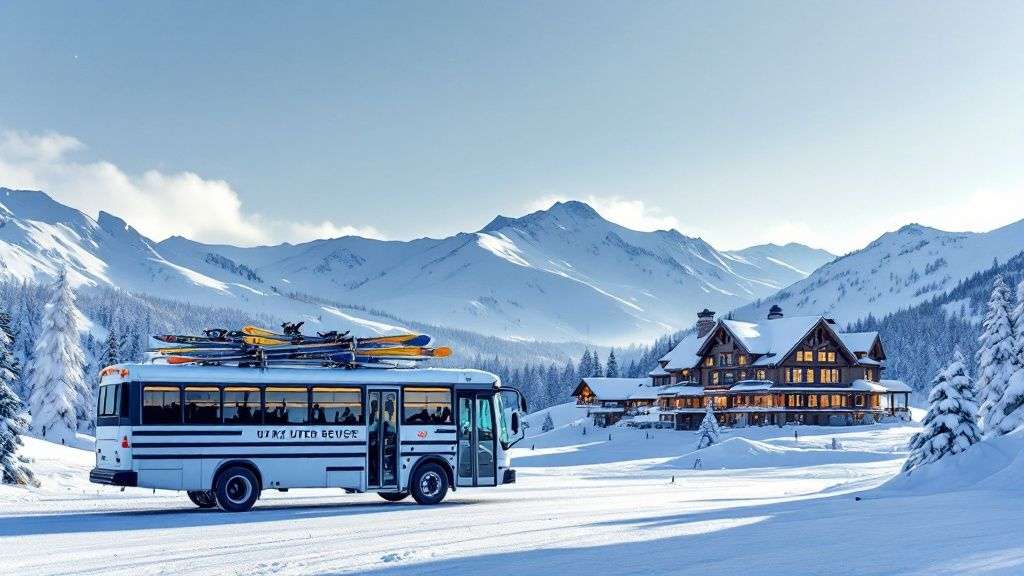Your Guide to the Ski Utah Bus Service
Everything you need to know about riding the UTA Ski Bus to Utah's resorts. Find routes, schedules, fares, and local tips for a traffic-free trip.
Getting to Utah's legendary ski resorts shouldn't start with canyon traffic. The Utah Transit Authority (UTA) ski bus is your best bet for a stress-free trip to the slopes, letting you skip the notorious "red snake" of brake lights. It's affordable, convenient, and drops you right at the base of the best snow on earth.
What is the Utah Ski Bus?
The UTA ski bus is a purpose-built winter transportation system designed to safely navigate the steep, snowy canyon roads leading to Utah's ski resorts. These are not your average city buses; they are equipped with automatic tire chains, heavy-duty brakes, and specialized gearing to handle winter conditions. Serving seven major resorts, this network is the backbone of winter transit for skiers, snowboarders, and resort employees, carrying over 412,000 riders each season.
Why Ride the Bus?
For the notoriously congested Cottonwood Canyons, the bus is a game-changer.
- Avoid Traffic & Parking: You get dropped off at the front, avoiding the canyon crawl and full parking lots.
- Save Money: Bus fare is a fraction of the cost of gas and rising resort parking fees.
- Stay Safe: Let an experienced driver handle treacherous mountain roads while you relax.
- Go Green: Fewer cars on the road means reduced emissions, helping keep our mountain air clean.
When Does the Ski Bus Run?
The UTA ski bus service generally runs from early December through mid-April, aligning with resort operating seasons. Bus frequency changes throughout the day to meet demand, with the most service during morning and afternoon peak hours. For the most accurate and up-to-date schedules, always check the official UTA website before you go.

Daily Schedule Flow
- Morning Peak (7:00 AM - 9:00 AM): Buses are most frequent and most crowded as everyone races for the first chair.
- Midday Lull (10:00 AM - 2:00 PM): Service slows, and buses are much quieter and less crowded.
- Afternoon Peak (3:00 PM - 5:00 PM): Frequency increases again as lifts close and skiers head home.
The numbers confirm this trend. During the historic 2023 winter, weekday boardings in February peaked at an average of 3,531 riders, highlighting the system's importance. You can read more about how emergency transit services handled this demand over at KSL.com.
Local Tips for a Smoother Ride
- Go Early or Go Late: To get a seat, be on one of the first buses of the day. Otherwise, wait until after 9:30 AM for a more relaxed trip.
- Beat the Rush Down: Leaving the resort at 2:30 PM is much less crowded than the 4:00 PM rush.
- Have a Plan B: Check for real-time UTA and UDOT alerts before you leave home. Storms and road closures can cause delays, an issue we cover in our Little Cottonwood Canyon traffic guide.
How to Ride the Ski Bus
Using the ski bus is simple. This step-by-step guide will walk you through the process, from finding your route to stashing your gear.

1. Find Your Route
Use the UTA website, Google Maps, or the Transit app to find the correct route number and schedule for your resort.
- Big Cottonwood Canyon (Solitude & Brighton): Take Route 972.
- Little Cottonwood Canyon (Snowbird & Alta): Take Route 994.
2. Go to a Park & Ride Lot
Most trips start at a free Park & Ride lot at the mouth of the canyon. Arrive early on weekends and powder days, as these lots fill up fast.
- For Big Cottonwood Canyon: Park at 6200 South & Wasatch Blvd.
- For Little Cottonwood Canyon: Park at 9400 South & 2000 East. For more details, see our guide on getting around Little Cottonwood Canyon.
3. Pay Your Fare
The easiest way to pay is with a tap-to-pay credit card or the UTA GoRide mobile app. If using cash, you must have the exact amount, as fareboxes do not provide change.
Local Tip: Don't pay if you don't have to! Your Ikon Pass and season passes for Alta, Snowbird, Brighton, and Solitude include free UTA ski bus service.
4. Load Your Gear
Buses have large exterior racks for skis and snowboards.
- Wait for the bus to stop completely.
- Slide your skis in tip-first or your snowboard in sideways.
- Board with your boots, poles, and backpack. Keep bags on your lap or under your seat to keep the aisle clear.
Ridership on these Salt Lake County routes increased by 8% in the 2023-2024 season, showing just how popular this service is. To help manage this demand, UTA also runs employee-only shuttles, which frees up thousands of seats on the public buses. You can learn more about the program's success from UTA's official report.

Ski Bus FAQ
Can I wear my ski boots on the bus?
Yes, but be careful as the floors can be slippery. All other gear, like backpacks and boot bags, must fit on your lap or under your seat to keep the aisle clear.
What happens if the canyon closes?
If the road closes due to weather or avalanche control, ski bus service is paused. Buses will hold their position until UDOT reopens the road. It’s wise to pack an extra layer, water, and a snack just in case of a delay.
Are the buses wheelchair accessible?
Yes, all UTA buses are ADA accessible with a ramp or lift. If you have adaptive ski equipment, call UTA customer service ahead of time to confirm how it can be stored.
For more answers to common questions, check out our frequently asked questions about canyon travel.
For the most current canyon conditions and real-time travel data, trust Wasatch Travel Helper to get you to the snow safely. Plan your trip at https://wasatchroads.com.